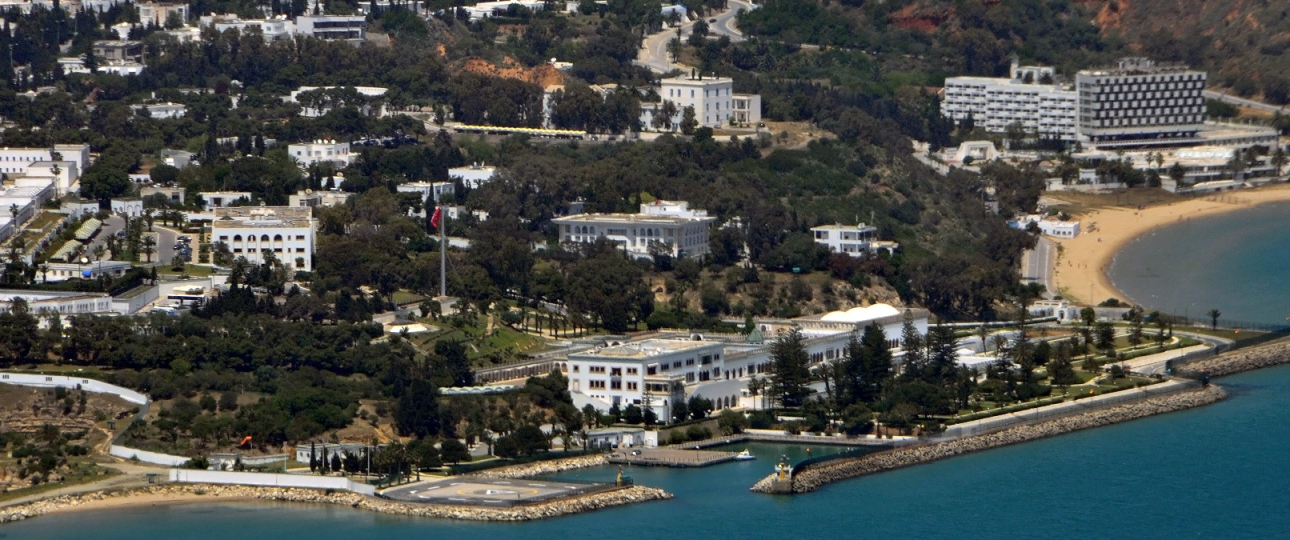Exploring Carthage: A Journey Through Time
Just a short distance from the bustling city of Tunis lies Carthage, a site steeped in ancient history. Once a dominant force in the Mediterranean, Carthage offers a fascinating blend of archaeological treasures, scenic coastal views, and a rich cultural tapestry. Prepare to be enthralled by the remnants of this once-great civilization.
A Brief Historical Overview
Carthage was founded by the Phoenicians in the 9th century BC, evolving into a major trading hub due to its strategic location. It became the capital of a Punic empire that controlled large parts of the Southwest Mediterranean. The city is famously known for its conflicts with Rome during the Punic Wars. Carthage was destroyed in 146 BC after a prolonged siege by the Roman Republic, but its ruins continue to tell a story of resilience and grandeur.
The Punic Wars
To understand Carthage, one must delve into its tumultuous history:
- The First Punic War (264-241 BC) was primarily fought over control of Sicily.
- The Second Punic War (218-201 BC) featured the legendary general Hannibal, who led his troops, including war elephants, across the Alps.
- The Third Punic War ended with the complete destruction of Carthage, yet its legacy endures.
What Makes Carthage Unique?
Carthage is a place where history and beauty converge. Here are some aspects that distinguish it:
- Archaeological Significance: The site is a UNESCO World Heritage Site, showcasing a variety of ruins that reflect its storied past.
- Historical Depth: Carthage’s history spans from its Phoenician origins through the Roman and Byzantine periods, and into the Islamic conquests.
- Cultural Fusion: The blend of cultures over centuries is evident in the architecture, cuisine, and local customs.
- Scenic Views: Situated on a hill overlooking the Mediterranean, Carthage offers breathtaking vistas.
Getting to Carthage
Traveling to Carthage is straightforward, whether you’re arriving from abroad or traveling within Tunisia.
International Travel
Most visitors arrive at Tunis-Carthage International Airport, located about 15 minutes from Carthage. Here are your options:
- Taxi: Taxis are readily available at the airport. It’s advisable to agree on a fare before starting your journey.
- Car Rental: Numerous car rental agencies operate at the airport for those who prefer driving.
Local Transportation
Once in Carthage, getting around is convenient:
- Train: The Tunis-La Marsa train line connects Carthage to Tunis and surrounding areas, facilitating exploration.
- Buses: Local buses frequently run between Carthage and Tunis, offering an affordable option.
- Taxis: Taxis are available throughout the area, providing a quick way to get around.
Best Time to Visit Carthage
The climate in Tunisia is Mediterranean, with hot summers and mild winters. Here’s a breakdown of the best times to visit:
- Spring (March to May): This season offers pleasant temperatures and blooming landscapes, making it an ideal time to visit.
- Fall (September to November): Cooler temperatures and fewer tourists make this another excellent time to explore Carthage.
- Summer (June to August): Expect hot weather, but the beaches are inviting for those who enjoy the sun.
- Winter (December to February): While cooler, the historical sites are less crowded, providing a more intimate experience.
Notable Attractions in Carthage
Carthage is home to numerous archaeological sites and points of interest that appeal to history enthusiasts and casual travelers alike. Here are some highlights:
The Antonine Baths
These impressive ruins are among the largest Roman baths ever built. Visitors can admire the remnants of the complex, which include:
- Massive vaulted ceilings
- Intricate mosaics
- Stunning sea views from the site
The Tophet
A sacred burial ground for children, the Tophet offers insight into ancient Carthaginian practices. The site features:
- Stone altars
- Numerous urns containing the remains of infants
- Beautifully laid out surrounding gardens
The Punic Ports
Once a hub of maritime activity, the Punic Ports are essential for those interested in Carthage’s naval history. Explore:
- The remnants of ancient docks
- Artifacts recovered from the sea
- The stunning coastal scenery
Byzantine Villas and the Carthage Museum
These sites provide a glimpse into life during the Byzantine period. Highlights include:
- Well-preserved mosaics and architecture
- A comprehensive collection of artifacts at the museum
- Stunning views of the surrounding landscape
Local Cuisine and Dining Options
No visit to Carthage is complete without indulging in its culinary delights. The local cuisine reflects Tunisia’s rich history and cultural influences.
Traditional Dishes to Try
- Couscous: A staple dish made from steamed semolina, served with a variety of meats and vegetables.
- Bric: A popular snack, bric is a pastry filled with egg and tuna, then fried to perfection.
- Tagine: A slow-cooked stew with spices, meat, and vegetables, inspired by the Moroccan version but unique to Tunisia.
Recommended Restaurants
Here are a few places where you can savor the flavors of Carthage:
- Restaurant Le Pirate: Known for its seafood dishes and stunning views of the Mediterranean.
- Chez Slah: A local favorite for traditional Tunisian fare.
- El Ali: Offers a mix of traditional and modern dishes, perfect for a relaxing dining experience.
Practical Travel Tips
To make the most of your visit to Carthage, consider the following tips:
- Dress Appropriately: While Tunisia is generally welcoming, dressing modestly is advisable, especially when visiting religious sites.
- Stay Hydrated: The Mediterranean sun can be intense, so carry water with you during your explorations.
- Learn Basic Arabic Phrases: While many locals speak French, knowing a few Arabic phrases can enrich your experience.
- Respect Local Customs: Understanding and respecting local traditions will make your visit more enjoyable.
Summary of Key Facts About Carthage
- Founded by the Phoenicians in the 9th century BC.
- Significant historical site of the Punic Wars against Rome.
- UNESCO World Heritage Site with a rich archaeological heritage.
- Best times to visit are in spring and fall.
- Accessible via Tunis-Carthage International Airport and local transportation options.
- Notable attractions include the Antonine Baths, Tophet, and Punic Ports.
- Local cuisine features dishes like couscous, bric, and tagine.
- Practical travel tips include dressing modestly and staying hydrated.
As you explore Carthage, take the time to absorb the rich tapestry of history that surrounds you. Each stone, each ruin, tells a story of a civilization that once ruled the waves and shaped the Mediterranean world. With its captivating allure, Carthage promises an unforgettable journey through time.




